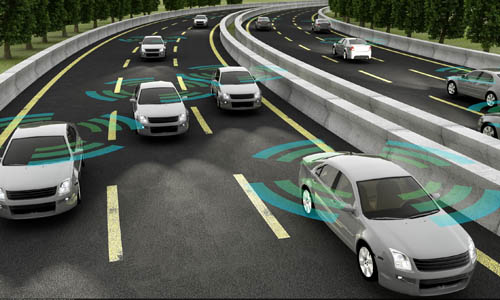The progression of autonomous vehicles in recent years has been impressive and rapid. They are no longer a concept of the future, but rather, technology that exists today. The market for these automobiles is beginning to be available for consumers.
What impact will the availability of autonomous vehicles have on the region’s transportation system? The Council is grappling with this question as it updates the current Transportation Policy Plan.
Benefits, concerns about autonomous vehicles
 What are autonomous vehicles? In a very basic sense, autonomous vehicles navigate within their environment without driver input. These vehicles have the capability to recognize objects, including other vehicles and pedestrians, while driving on their own.
What are autonomous vehicles? In a very basic sense, autonomous vehicles navigate within their environment without driver input. These vehicles have the capability to recognize objects, including other vehicles and pedestrians, while driving on their own.
Proponents of autonomous vehicles believe that many benefits will result once this technology is available to everyone. One benefit includes safety – injuries and fatalities of both vehicle occupants and vulnerable road users will be reduced. Another benefit is increased mobility to society. Information about travel conditions will improve due to the technology of the vehicles, which can increase the capacity of our roads.
Other benefits of autonomous vehicles are the environmental impacts that result with reduced vehicle travel and fuel efficiency by avoiding unnecessary stops and idling. In addition, autonomous vehicles expand transportation options for people who do not have access to driving (seniors, people with disabilities, etc.).
At the same time, many concerns are being expressed about the use of autonomous vehicles. Safety is on this list. Will these vehicles really know when to stop, accelerate and avoid crashes without driver control? Other concerns include cost, liability, and systems failures—including data privacy and security.
Council priority is safe, efficient transportation system
“Autonomous vehicles have the potential to change the way the region invests in land use, transit and roadways,” said Nick Thompson, general manager of the Council’s Metropolitan Transportation Services division. “However, any change in investment due to autonomous vehicles is a long way off and priority will remain on what is currently in our long-range plans, namely, preservation of our current infrastructure.”
The Council is monitoring the development of autonomous vehicles and participating in conversations with our partners in local government and the community about their progress. As part of the Transportation Policy Plan, the Council is modeling two scenarios that will show potential transportation impact of all vehicles being autonomous in 2040. The results of this effort will begin to inform the discussion on future policies and investment. Right now, how autonomous vehicles will operate once they are on the road is uncertain. The priority is to make sure that the region remains connected in the safest and most efficient way.
Under state law, the Council resets its Transportation Policy Plan every 10 years, and updates it every 3 to 4 years in between.